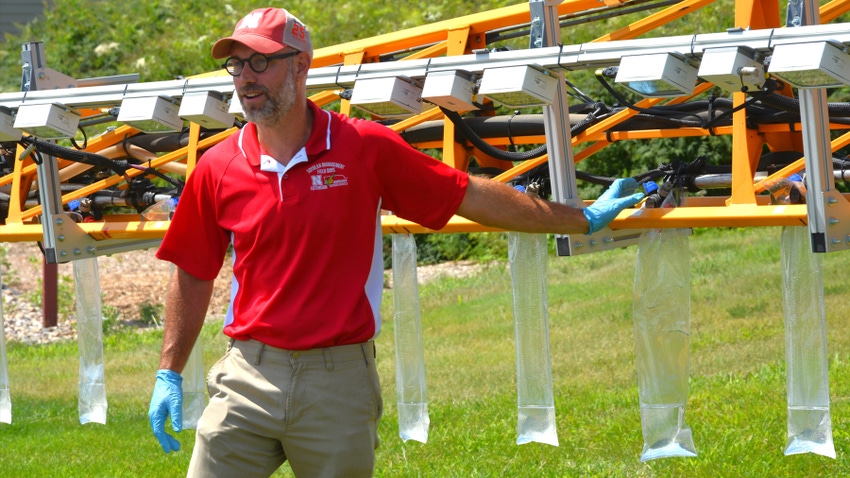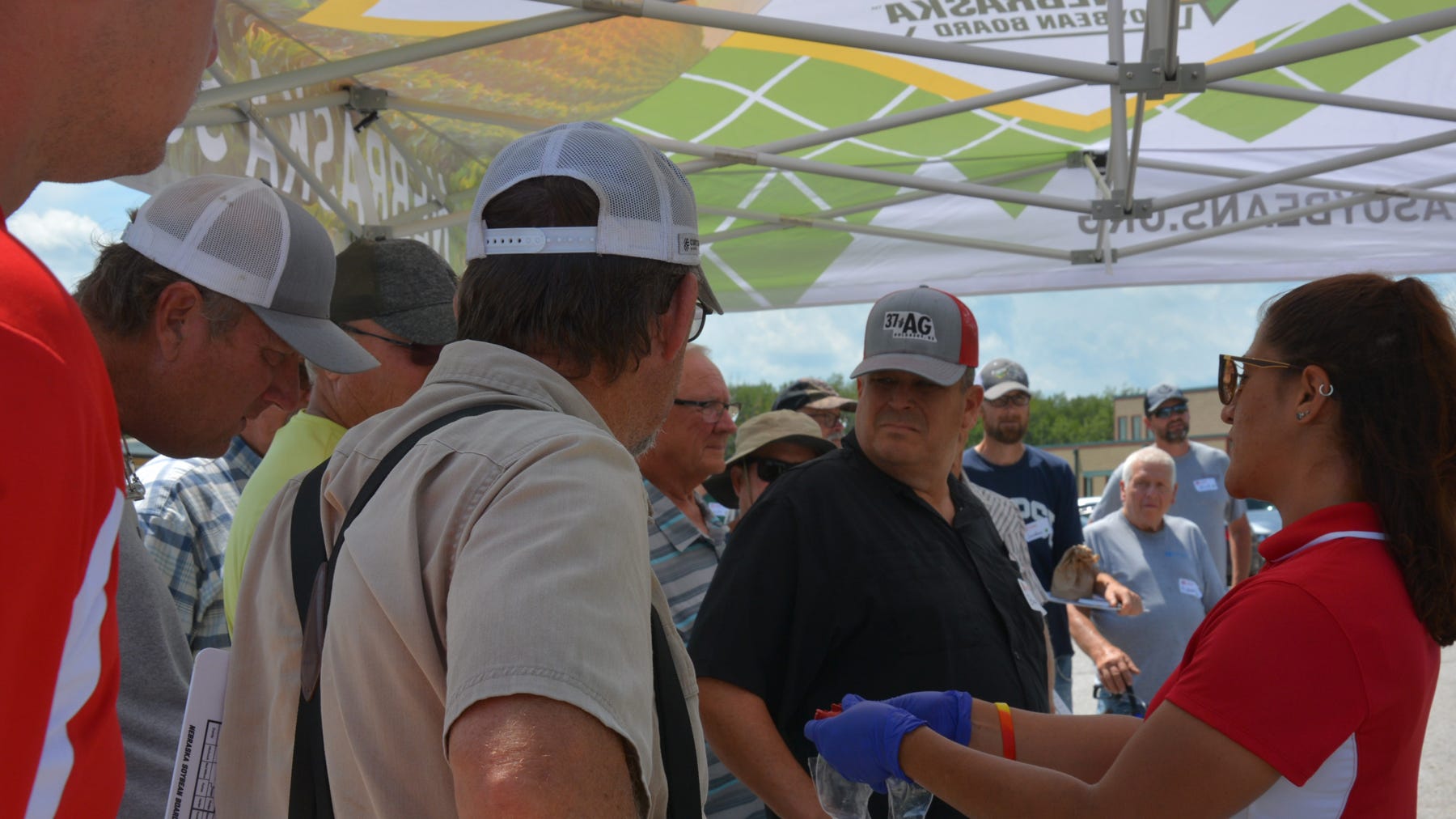
Sprayer management can feel like an impossible puzzle to solve. From nozzle selection to sprayer calibration to tank cleanout, each step is important to eradicate weeds and pests.
“It [sprayer management] seems simple. You just dump something in a tank and drive across the field,” says Chris Proctor, Nebraska weed management Extension educator. “But there are a lot of factors that go into making sure that the application is effective.”
Proctor and his graduate students walked through different management decisions when it comes to the sprayer. They also demonstrated to producers how to choose the right nozzle and find malfunctioning ones on a sprayer at a University of Nebraska 2023 Soybean Management Field Day event at Eastern Nebraska Research, Extension and Education Center near Mead.
With the increase in input costs, taking these tips into consideration can ultimately help the bottom line:
Nozzle selection. The first step of choosing the best nozzle is understanding what weeds are being targeted and the current growth stage of the crop. It can be hard to balance finding the trade-off of reducing drift but also maximizing effectiveness. Droplet size, drift risk and coverage are all related factors that need to be considered. The coarser the droplet size is, the lower the coverage is. However, it also lowers drift risk.
“You can increase coverage by decreasing droplet size, but you are going to increase potential for drift,” Proctor says. “You have to play a little bit of a tug-of-war game in terms of picking the right nozzle to match the scenario.”

SPRAY RATES: Ana Clara Gomes (right), a UNL graduate student, shows producers how to use bags to calibrate their sprayers. By collecting the output from each nozzle, producers can ensure that their sprayers are being fully optimized.
Sprayer calibration. It goes without saying that the nozzle spacing, sprayer speed, pressure and output should all match the nozzle information. But periodically checking that the numbers match with the output of the sprayer will optimize efficiency. Make sure to note damaged or plugged nozzles that will compromise distribution.
Here are five steps from Nebraska Extension to correctly calibrate your sprayer:
Check hose and nozzle leaks. Make sure to use the test mode based on the nozzle information.
Install bags on each nozzle. This will allow you to visualize the outputs of each nozzle.
Turn the sprayer on for one minute. Collect the weight of all the bags to get your flow rate in gallons per minute.
Look at the results. If you witness 10% over the expected flow rate, your nozzle needs to be changed. If it is under 10% under the flow rate, it will be beneficial to do a cleanout of the nozzle.
Test it out again. Match the numbers of the monitor with the boom, and make sure to note the improvements you made.
Tank cleanout. It might not always be feasible to dedicate a sprayer for specific pesticide applications. It is important to properly clean out the tank when switching between products and crops.
Specifically to soybeans, dicamba can cause damage to non-dicamba resistant crops. As sprayers get more advanced, Proctor recommends that you take the time to thoroughly clean out your sprayer to avoid mishaps in the field.
For more information about weed management or sprayer care, reach out to Proctor at [email protected].
About the Author(s)
You May Also Like






